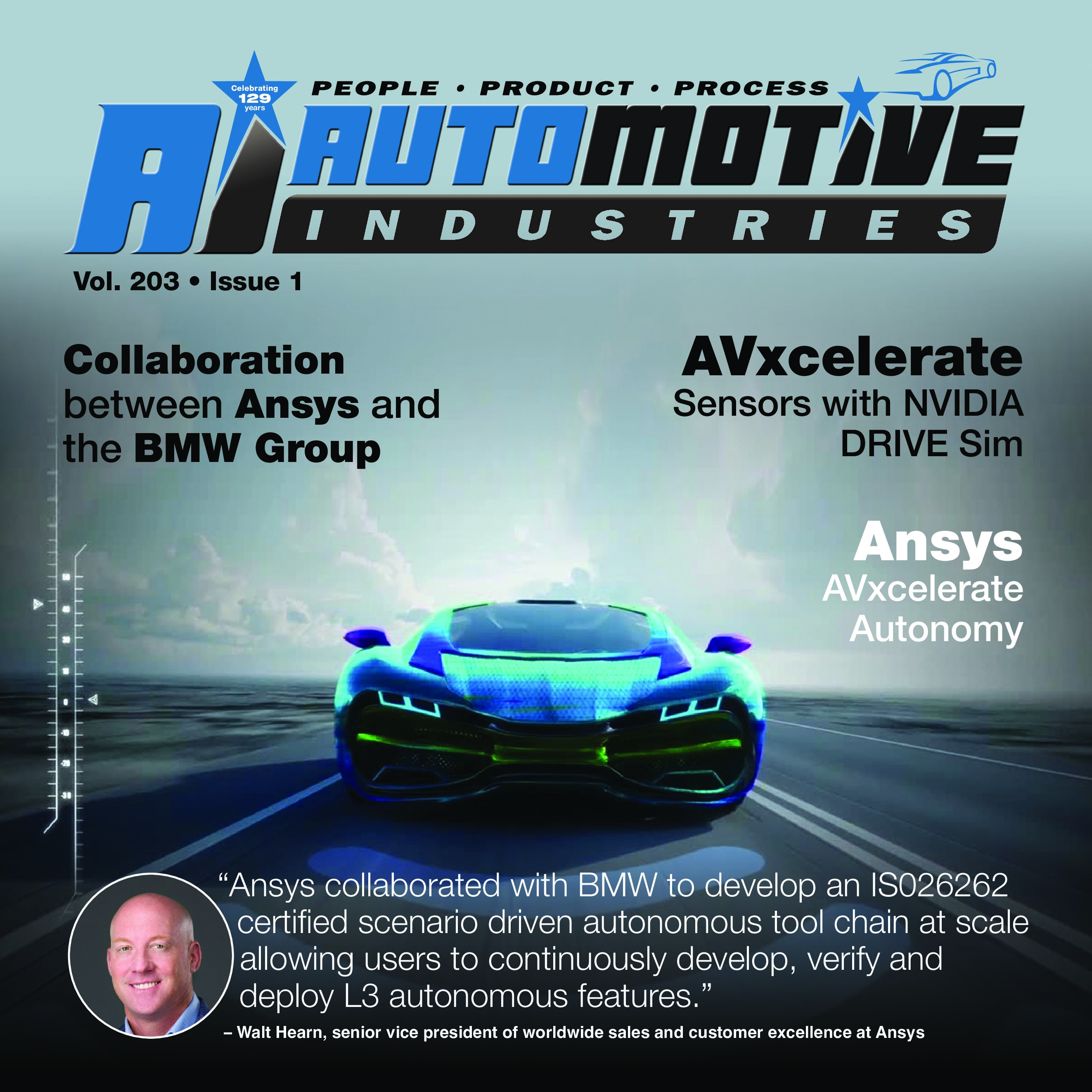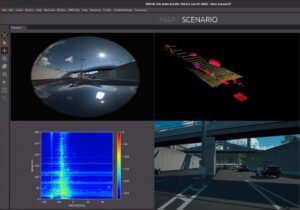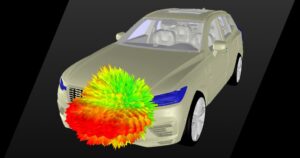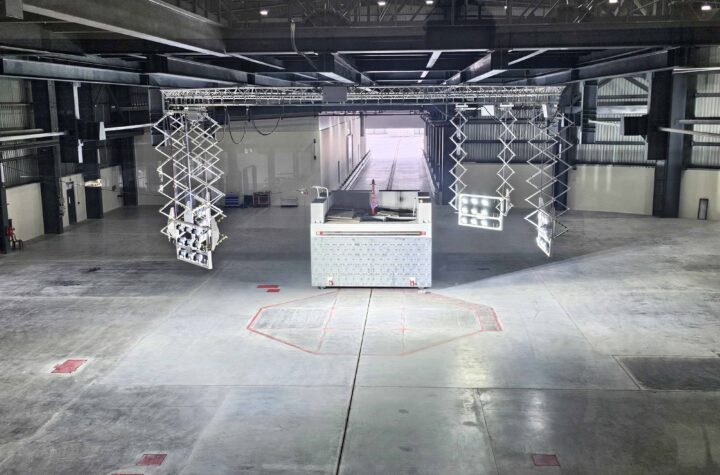
Revolutionizing Autonomous Vehicle Development – An In-Depth Look at Ansys AVxcelerate Solutions and collaborations with BMW and NVIDIA
In the rapidly evolving landscape of autonomous vehicles (AVs), the integration of cutting-edge technologies and simulation tools plays a pivotal role in ensuring their safe and efficient development.
Ansys, a global leader in engineering simulation, has been at the forefront of advancing autonomous vehicle testing through its AVxcelerate Autonomy and AVxcelerate Sensors solutions.
In an exclusive interview with Walt Hearn, Senior Vice President of Worldwide Sales and Customer Excellence at Ansys, Automotive Industries (AI) explores the intricacies of Ansys’ AVxcelerate offerings, its collaboration with the BMW Group, and the integration with NVIDIA DRIVE Sim.
AI: How does Ansys AVxcelerate Autonomy ensure the accuracy and realism of simulations to effectively test and validate autonomous vehicles’ sensor and software performance?

Hearn: The accuracy, realism and effectiveness of any simulation is measured by how closely the movement of vehicles and the sensor responses duplicate the real-world event being simulated.
The geometry or map of the road network, terrain, buildings, and other actors (the scenario) should be based on real map data, and the scenario and all objects within, must be tagged with material properties, enabling AVxcelerate’s high-fidelity physics sensor models to duplicate the performance of real-world sensors.
AVxcelerate Autonomy uses expansive scenario variation management capabilities, combined with physics-based sensor models to ensure the accuracy and realism of simulations to effectively test AVs.
Using these capabilities, AVxcelerate Autonomy can perform sensitivity and reliability analyses to help users determine the probability of ADAS/AV system failure and validate systems at scale.
AI: Autonomous vehicles must handle critical edge cases to ensure safety. How does AVxcelerate Autonomy simulate these challenging scenarios, and what advancements does it bring to handling such cases?
Hearn: Edge cases are those rarely occurring scenarios that the AV system may never experience in normal operation, but which present a high probability of failure if they occur.
Validating against these rarely occurring scenarios can be very challenging and expensive in physical drive testing.
For example, how will the system respond to a deer running across the highway?
How do lighting and weather conditions impact the system response?
The AVxcelerate Autonomy platform can easily simulate these dangerous scenarios, using physics accurate sensor model and an adaptive exploration algorithm optimized in the cloud, allowing users to accelerate sensitivity analyses by 1,000X.
AI: Please elaborate on the specific contributions and collaboration between Ansys and the BMW Group in developing the AVxcelerate Autonomy solution.
Hearn: Ansys collaborated with BMW to develop an IS026262 certified scenario driven autonomous tool chain at scale allowing users to continuously develop, verify and deploy L3 autonomous features.
The automated simulation toolchain made use of BMW’s large amount of sensor data via intelligent data analytics and scenarios created based on statistical relevance and AD system sensitivity.
Based on these scenarios, the tool chain performed safety assessments of AD systems in a high-performance virtual environment.
Ansys and BMW support adaptability and openness regarding relevant interfaces and validation approaches to accommodate and foster safety initiatives.
Reciprocity between the two companies enables more informed decision-making during Ansys’ software development that benefits the original equipment manufacturer (OEM) and other Ansys customers. Ansys can observe firsthand how the BMW Group is addressing key design and safety challenges with both physical and simulated data in real time.
AI: The need for extensive testing often requires scalability. How does AVxcelerate Autonomy address the scalability challenge in simulating billions of miles of on-road testing in a controlled virtual environment?
Hearn: The combined solution of AVxcelerate Autonomy brings together accurate sensor simulation, scenario-based validation and advance sensitivity and reliability analysis at scale easily deployed on cloud platforms.
AVxcelerate Autonomy efficiently tackles scalability challenges in extensive testing scenarios by leveraging advanced virtual environments, robust computing infrastructure, and sophisticated sensitivity and reliability algorithms.
AI: Ansys AVxcelerate Sensors are integrated into NVIDIA DRIVE Sim. How does this integration enhance the overall simulation capabilities, especially in terms of high-fidelity sensor simulation outputs for perception ADAS/AV systems?

Hearn: The accuracy, realism and effectiveness of any simulation is measured by how closely the movement of vehicles and the sensor responses duplicate the real-world event being simulated.
Having the accuracy in simulation that both Ansys and NVIDIA bring will allow our customers to validate often and quickly in simulation vs expensive drive tests.
The overall simulation capabilities in terms of high-fidelity sensor simulation are enhanced by the combined strengths of NVIDIA and Ansys to narrow the gap between reality and simulation.
Ansys AVxcelerate Sensors augment NVIDIA DRIVE Sim’s high-fidelity, scalable 3D environments for scenario generation with accurate physics solvers for camera, lidar, radar and thermal sensors.
AI: How does artificial intelligence (AI) contribute to rapid prototyping and efficient algorithm refinement of AVs, and what role does it play in the Ansys AVxcelerate Sensors simulation?
Hearn: AI in NVIDIA DRIVE Sim enables rapid prototyping and algorithm refinement for AVs by leveraging the Omniverse’s ability to create synthetic data for training computer vision models, while integration with Ansys AVxcelerate Sensors allows for seamless physics accurate simulation and validation of critical environmental interactions, such as perception algorithm limitation, edge cases and effects too expensive to test using traditional closed test tracks or public roads, accelerating AV technology development for OEMs.
AVxcelerate Sensors is also used to train and test AI-based perception algorithms (the software detecting and classifying objects around the autonomous vehicle).
Combined with environment and scenario simulation capabilities from NVIDIA DRIVE Sim, AVxcelerate Sensors contributes to the harnessing of accurate simulation for the improvement of AI-based software safety and performances.
AI: How does the integration with NVIDIA DRIVE Sim offer developers greater flexibility in developing, testing, and validating autonomous vehicle software, as mentioned by Zvi Greenstein from NVIDIA?
Hearn: AVxcelerate complements NVIDIA DRIVE Sim with the capability to generate accurate synthetic sensor data.
This synthetic raw sensor data is critical for the development and testing of autonomous vehicle perception software.
This type of software is based on deep learning and AI, and the only way to properly train and test performance is to confront them against a large variety of data.
The quality of the synthetic data used to train perception software is critical.
The more qualitative (close to reality), the more the gap between simulation and reality is reduced.
This allows developers to test perception algorithms with the confidence that they will behave the same way in both simulation and the real world.
AI: Could you elaborate on how the open ecosystem approach, particularly using NVIDIA Omniverse, benefits the collaboration, and how developers can leverage it to build scalable simulations and AI model training?
Hearn: The open ecosystem allows developers to not only build scalable simulations but also act as a data factory for AI model training.
Developers can harness the Omniverse to build their custom synthetic data generation pipelines and generate annotated data to train the on-board computer vision models.
All major 3D modelling software have a bridge to Omniverse.
This is critical to ensure the efficiency and diversity of the data preparation workflows used to create synthetic worlds and populate them with the assets needed for a scenario, such as traffic, pedestrians, etc.
AI: The connection with Ansys AVxcelerate Sensors is built with APIs. How does this facilitate the integration of Ansys physics solvers into NVIDIA’s 3D virtual world, and what advantages does it bring to developers working on AV technology development?
Hearn: The APIs provide a well-documented, straight forward way to integrate AVxcelerate Sensors with NVIDIA, and with other tools currently in existence or that may be developed in the future.
As the world leader in physics-based simulation, Ansys strives to make our sensor models available to the entire autonomous vehicle development ecosystem.
The use of APIs facilitates the seamless integration of Ansys physics solvers into NVIDIA’s 3D virtual world, providing developers with advanced simulation capabilities for accurate sensor modeling and accelerating autonomous vehicle technology development.









More Stories
MESSRING completes new crash test facility for Mahindra in India
ROHM Develops an Ultra-Compact MOSFET Featuring Industry-Leading* Low ON-Resistance Ideal for Fast Charging Applications
More than 30 of the top 50 global suppliers have production facilities in Turkey